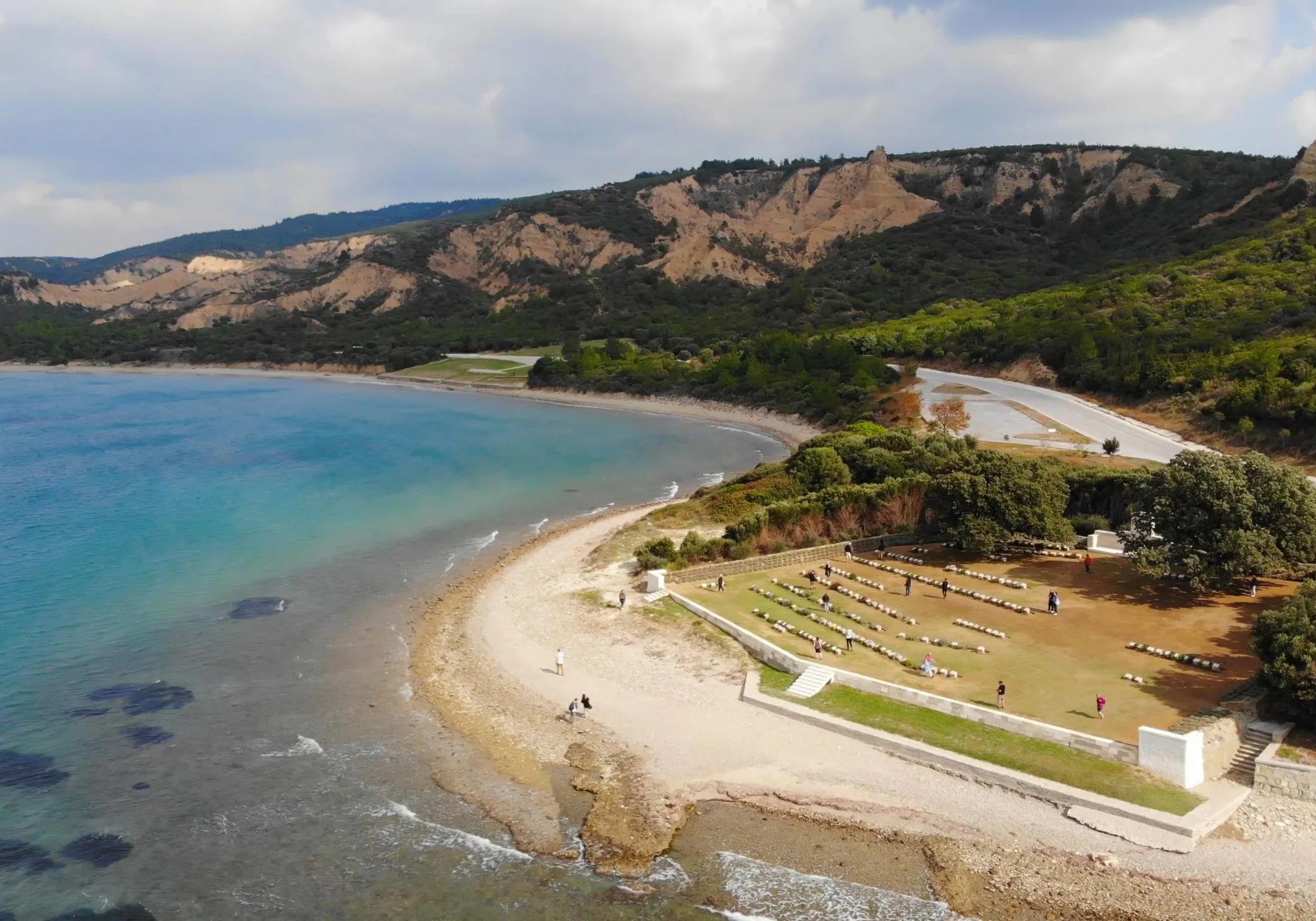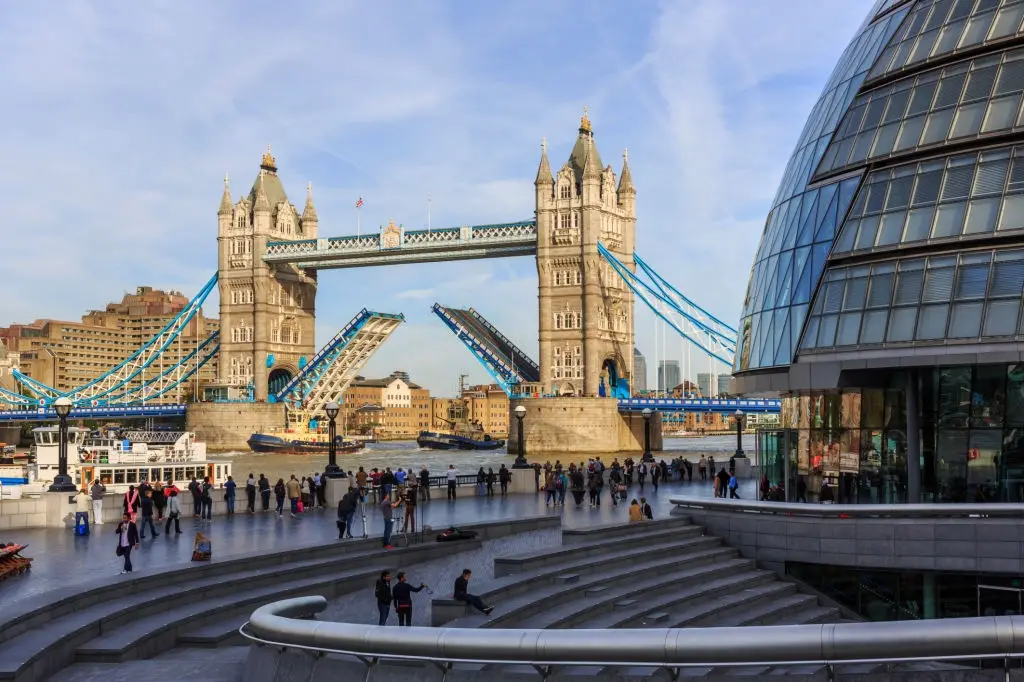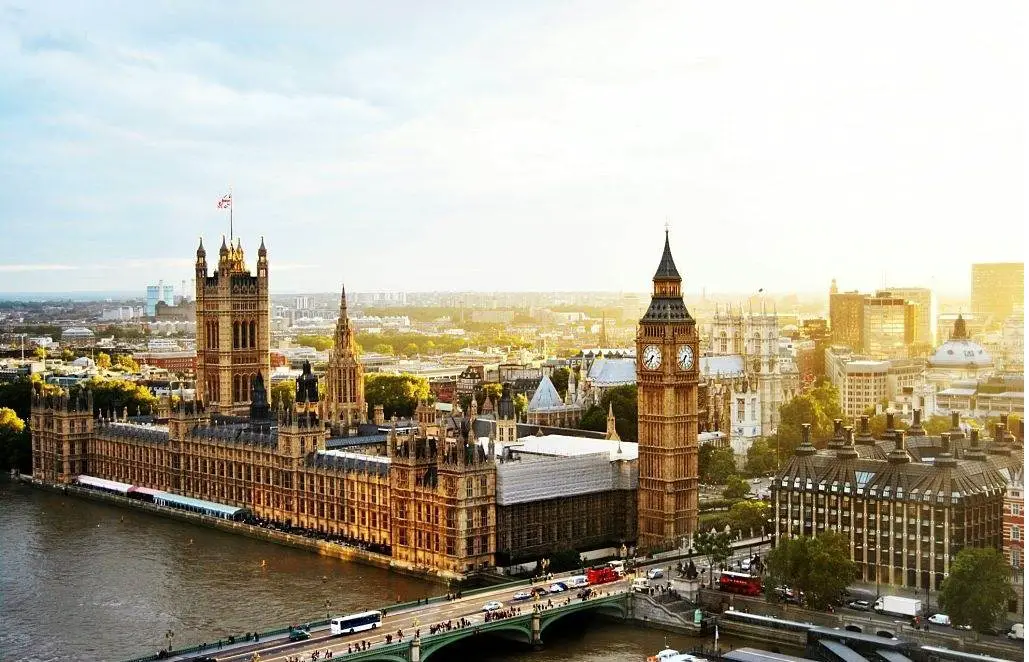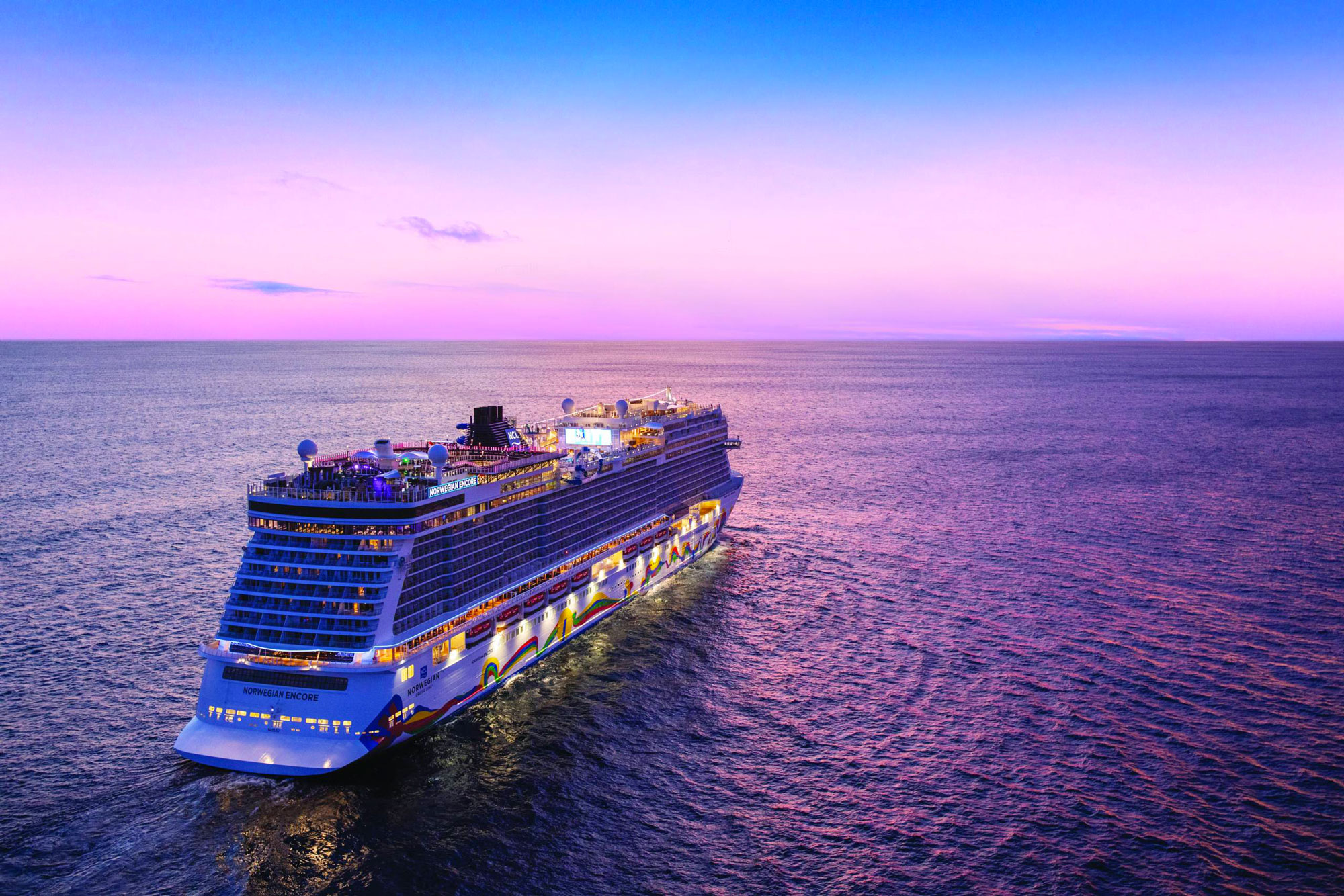Welcome to Anzak Bay Beach, better known to many around the world as Anzac Cove. Settled on the northern shoulder of Turkey’s Gallipoli Peninsula, this modest 600-metre shingle shore is a place where crystalline Aegean water meets the poignant memory of the dawn landings on 25 April 1915.
Today, it is equally a national shrine, an open-air classroom, and one of the peninsula’s loveliest pockets of coastline. In the paragraphs that follow, you will find everything you need to plan a respectful, well-timed, and budget-savvy journey, written by a traveller who has stood on the cove at both the stillness of sunrise and the bustle of Anzac Day.
Why Anzak Bay Beach Matters?
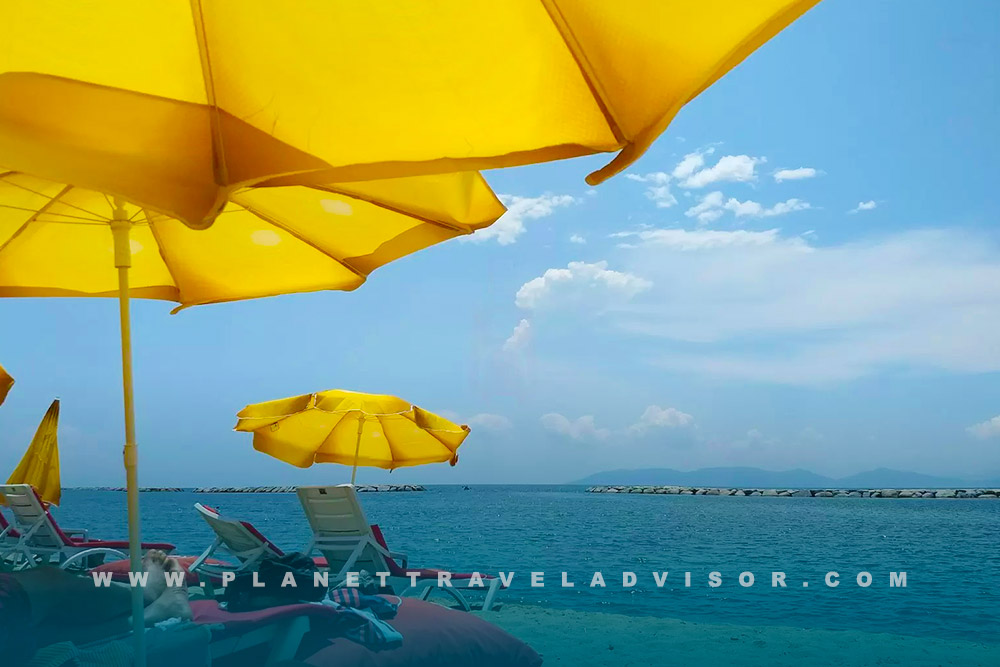
Most visitors arrive carrying at least a sketch of the story: Australian and New Zealand Army Corps troops, hence “ANZAC”, came ashore here before dawn on 25 April 1915 and were pinned against the escarpment by Ottoman defenders. The eight-month stalemate forged identities on both sides and left more than 130,000 dead. In 1985, the Turkish Government formally accepted the name Anzac Cove.
By 2000, the Anzac Commemorative Site, located just north of the original cove, was opened to accommodate the swelling crowds that gather each 25 April for the Dawn Service. Yet when the commemorations disperse, Anzac Bay Beach reverts to tranquillity, lapping surf, scented pines, and wheeling gulls. That dramatic contrast between peace and memory is precisely what makes the cove worth crossing oceans for.
Where Exactly Is Anzak Bay Beach?
The beach is located within the Gallipoli Peninsula Historical National Park, approximately 7 km north of Eceabat and 18 km by road and ferry from the university city of Çanakkale, situated on the Asian shore of the Dardanelles. From Istanbul, it is roughly a five-hour inter-city coach ride. Signage within the park is excellent, and every turn seems to reveal another cemetery or trench system cut into the calcareous headlands.
Getting to Anzak Bay Beach
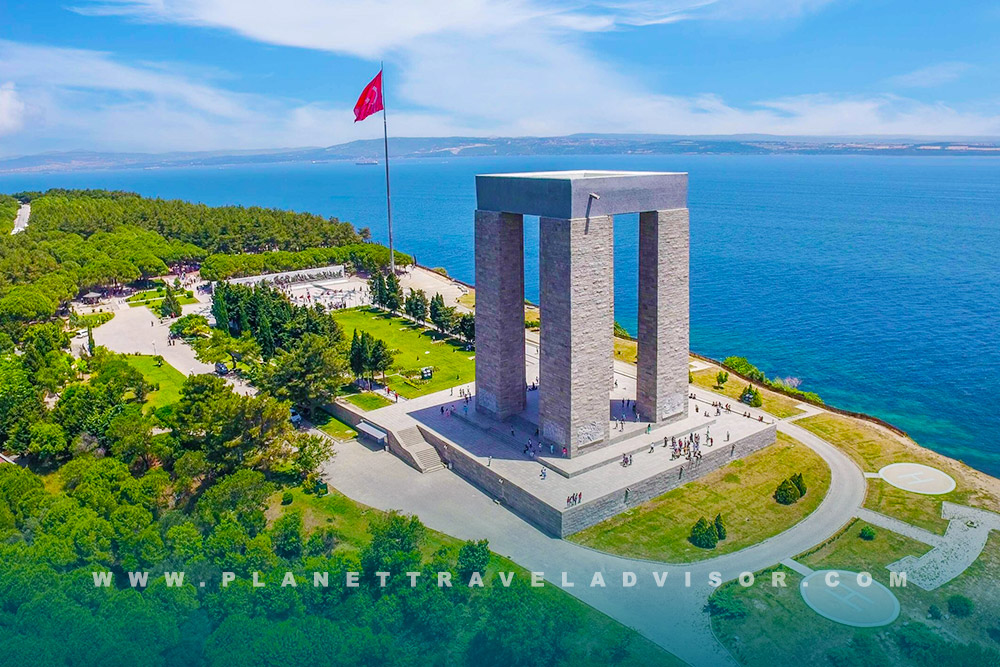
From Istanbul to Çanakkale
Modern coaches operated by Metro Turizm and Kamil Koç depart both Istanbul airports almost hourly. Journeys take five to six hours, cost around ₺500–₺650, and usually include a comfort stop near Tekirdağ.
Crossing the Dardanelles Strait
Passenger and car ferries shuttle between Çanakkale and Eceabat every single day of the year. The operator Gestaş lists departures on the hour from 07:00 to 24:00, with extra early-morning sailings at 02:00 and 04:00. The crossing lasts about twenty-five minutes, and the pedestrian fare remains a symbolic ₺2 (seven U.S. cents).
Final Leg: Eceabat to the Beach
From Eceabat harbour, follow the coastal park road north for ten minutes by taxi, private vehicle, or bicycle. Public minibuses do not run inside the national park, so self-propelled or organised transport is essential.
Entry, Permits & Anzac Day Passes
Access to the national park is free year-round, and there are no ticket barriers at memorials or cemeteries. Two small indoor exhibitions (Çanakkale Epic Museum and the Simulation Centre) charge up to ₺100 (about US$3).
If you plan to attend the Dawn Service on 25 April 2025, you must pre-register online for a free attendance pass issued by the Australian Department of Veterans’ Affairs. No walk-ins are admitted. Registration will open on November 2025 for the 2026 centenary events.
Climate and the Best Time to Experience Anzak Bay Beach
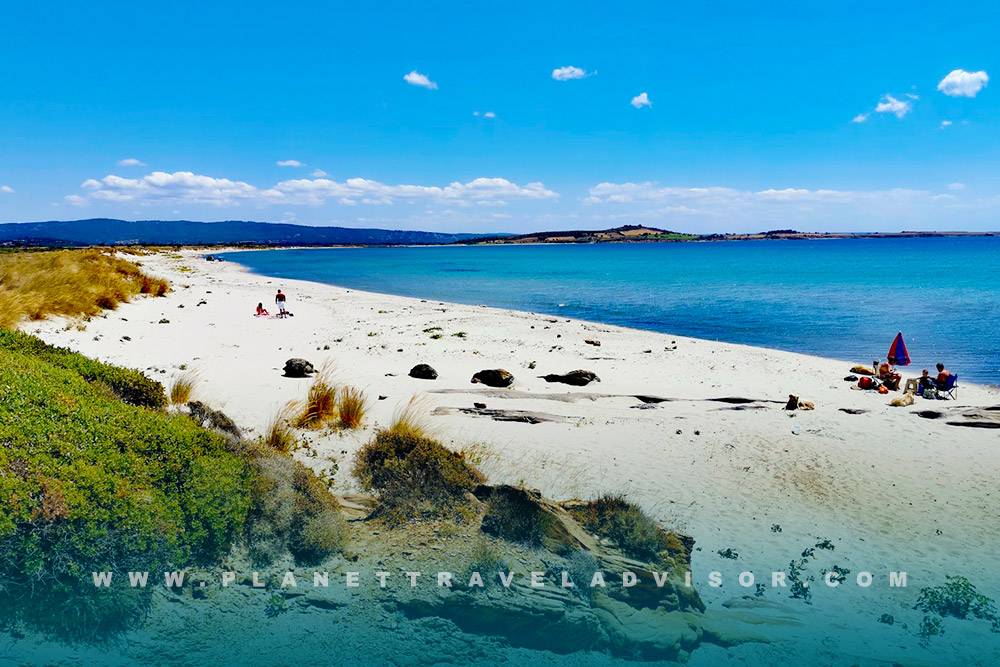
Gallipoli shares a mild Mediterranean pattern: hot, arid summers; damp, green winters; and shoulder seasons that often feel like extended spring. Average daytime temperatures climb from 11–16 °C in mid-winter to 29–31 °C at the height of July and August. April, the anniversary month, hovers around 18 °C with chilly nights of 10 °C and nine days of rainfall on average.
Peak vs. Off-Peak Explained
- Late April: Attracts up to 10,000 visitors. Book everything months ahead.
- June to August: Aegean holidaymakers arrive. Fantastic swimming, but higher hotel rates.
- September to October: Water remains warm, crowds thin, and sunsets turn golden. This is the sweet spot for most independent travellers.
- November to March: Winds can close the strait for hours, yet prices plummet, and you may have beaches, trenches, and memorials almost to yourself.
Cheapest Window for International Travellers
Skyscanner’s fare tracker shows the lowest Europe-to-Istanbul returns, around US$426, appear consistently in February and early March. Hotel platforms list dormitory beds in Eceabat from US$15 in mid-winter and double rooms in Çanakkale’s four-star riverfront properties from £82/US$105 outside the June–August rush. Pairing those savings with off-peak ferry decks free of tour-bus queues makes late winter or very early spring the budget traveller’s secret weapon.
Things to See and Do Around Anzak Bay Beach
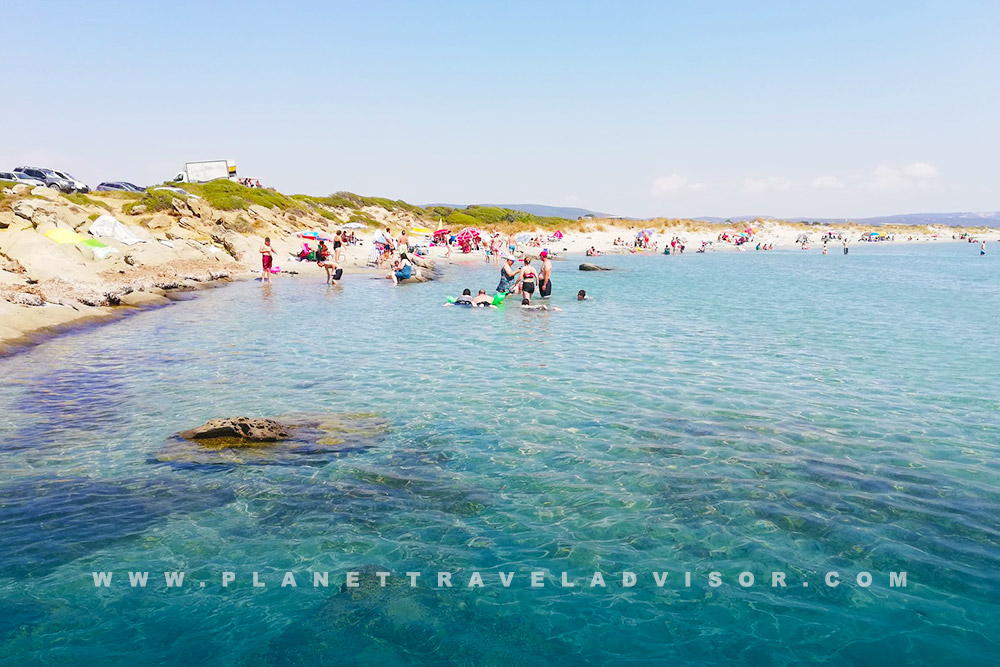
The Battlefield Circuit
Even if military history is not your usual interest, walking the short loop of Ari Burnu Cemetery, Anzac Bay Beach foreshore, Beach Cemetery, and the steep zig-zag up to Plugge’s Plateau delivers a stirring primer in under two hours. Information panels illustrate before-and-after photographs; scattered among the thyme and scrub are silent shards of shrapnel and rum bottle glass. Just north lies the purpose-built Anzac Commemorative Site, capable of holding the Dawn Service crowd in a natural amphitheatre carved from the dune.
Swimming and Shoreline Leisure
On days without ceremonial preparations, you are welcome to swim. The gradient is gentle, the water startlingly clear, and the most common hazards are sea urchins; reef shoes help. Authorities ask swimmers to keep fifty metres clear of commemorative jetties and to remember that sun loungers look incongruous beside war graves. Picnic on the rocks west of the cove; you will likely share the space with nothing louder than cicadas.
Guided Tours
English-language half-day minibus tours depart Çanakkale and Eceabat most mornings (US$35–45 per person) and weave together first-hand diaries, Ottoman tactics, and the role of coastal artillery. Private guides start at about US$580 for a bespoke Troy-and-Gallipoli two-day sweep, including hotel and meals. Booking beyond April remains straightforward even a day or two ahead.
Easy Day Excursions
Should you have an extra day, cross the Dardanelles to wander Homeric Troy, an hour’s drive south of Çanakkale, or board the fast catamaran to vineyard-dotted Bozcaada Island for Aegean seafood and cobblestoned alleys.
Accommodation Overview
T.J.’s Hotel in Eceabat is a perennial favourite among Australians thanks to its sea-view balconies and hybrid Aussie-Turkish grill menu; rooms run to about £60 outside summer. If hammocks strung under mulberry trees appeal, look at Trekios Pansiyon, a beach-house-style guesthouse a three-minute stroll from the water.
Travelling families often opt for Şahin Apart, a set of self-catering flats where a full kitchen reduces meal costs. Those craving nightlife base themselves across the strait in Çanakkale, where riverfront promenades are lined with bars and pastry cafés, double rooms in good four-stars hover between £130 and £150 even at peak.
Final Reflections
To step onto Anzak Bay Beach is to experience one of the modern world’s great paradoxes: the gentlest of seas washing a shore once ripped by shells. Come armed with empathy, historical curiosity, and a plan shaped by the seasons, and you will leave carrying far more than photographs. You will carry a fragment of shared memory, of sorrow, courage, and reconciliation, that continues to ripple across the Dardanelles a century later.
Our premium Turkey tour packages are designed for immersive travel, combining skip-the-line entry to iconic sites, charming boutique stays, and expert local guides who reveal the stories behind every destination. Reserve your place this week to enjoy exclusive seasonal savings and limited departures in spring and autumn. Explore Istanbul, Ephesus, and Cappadocia like never before.

